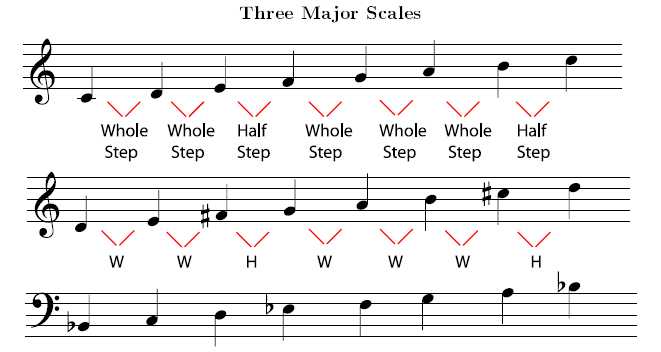To find the rest of the notes in a major key, start at the tonic and go up following this pattern: whole step, whole step, half step, whole step, whole step, whole step, half step. This will take you to the tonic one octave higher than where you began, and includes all the notes in the key in that octave.
Example 4.4:
These major scales all follow the same pattern of whole steps and half steps. They have different sets of notes because the pattern starts on different notes.

Listen to the difference between the C major, D major, and B flat major scales.
Exercise 4.5:
For each note below, write a major scale, one octave, ascending (going up), beginning on that note. If you're not sure whether a note should be written as a flat, sharp, or natural, remember that you won't ever skip a line or space, or write two notes of the scale on the same line or space. If you need help keeping track of half steps, use a keyboard, a picture of a Figure 4.6, a written chromatic scale, or the chromatic scale fingerings for your instrument. If you need more information about half steps and whole steps, see Half Steps and Whole Steps.
If you need staff paper for this exercise, you can print out this staff paper PDF file.

In the examples above, the sharps and flats are written next to the notes. In common notation, the sharps and flats that belong in the key will be written at the beginning of each staff, in the key signature. For more practice identifying keys and writing key signatures, please see Key Signature. For more information about how keys are related to each other, please see Scales that aren’t Major or Minor .
- 6040 reads






